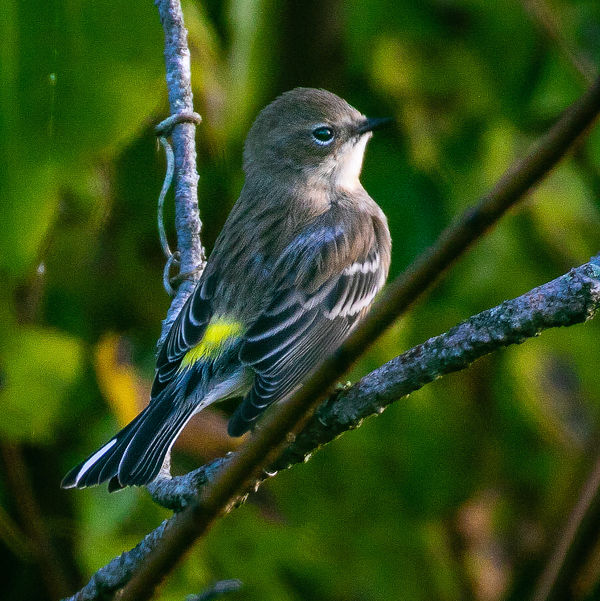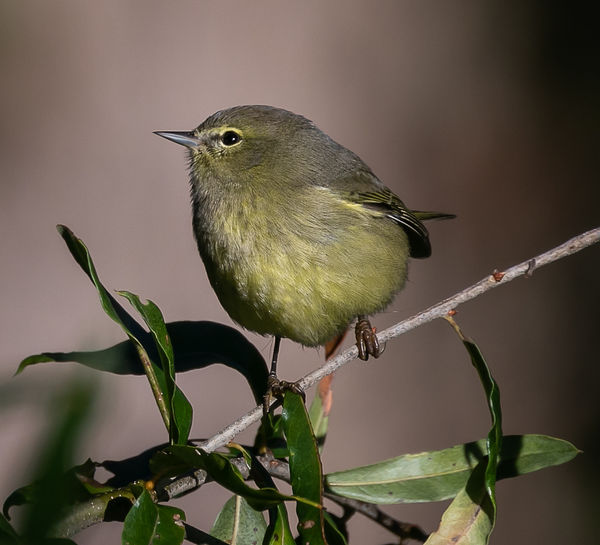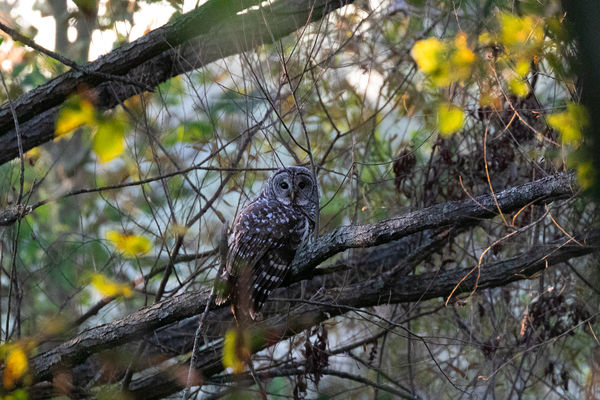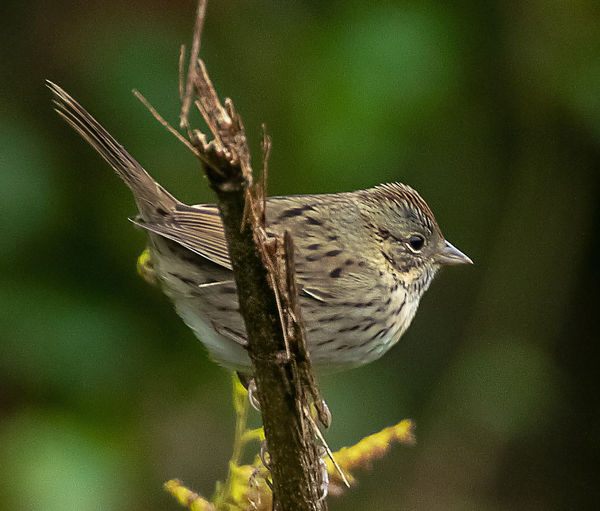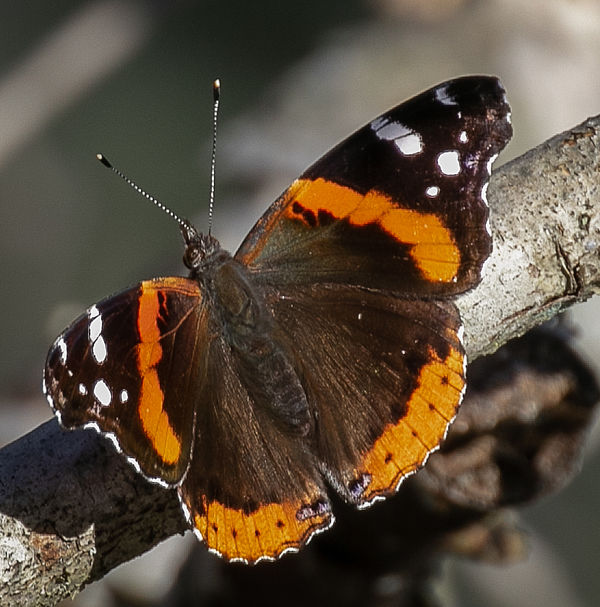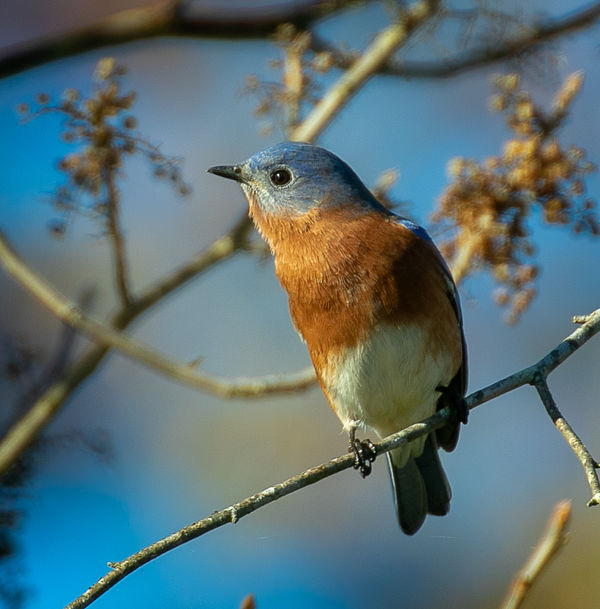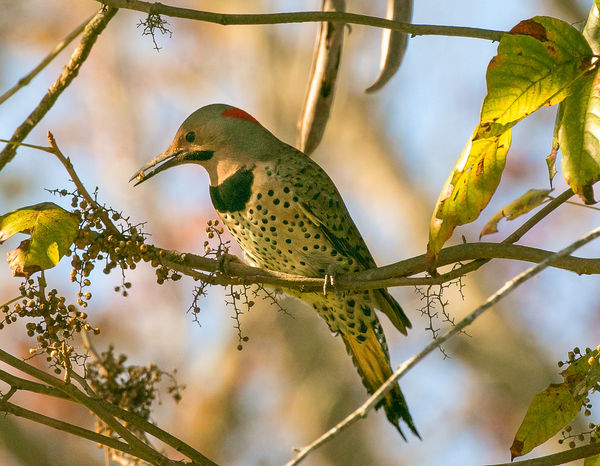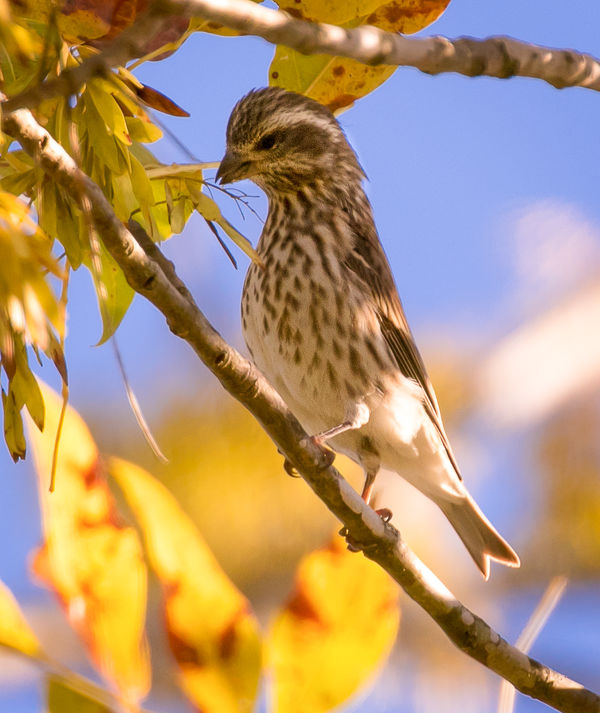Posts for: MikeBl
Oct 23, 2018 12:50:58 #
Paul J. Svetlik wrote:
Good bird shot, Mike.
Although I think you forgot to also mention the lens and the camera info?
After the download and double click download I can see some weird texture.
Is is intentional?
Thank you for sharing!
Although I think you forgot to also mention the lens and the camera info?
After the download and double click download I can see some weird texture.
Is is intentional?
Thank you for sharing!
If I had wanted analysis I would have included the camera and lens.
Thanks.
Oct 22, 2018 14:05:06 #
Yellow-rumps are here in big numbers!
Yellow-rumped warbler (Setophaga coronata)
W. Kentucky, USA 10/22/2018
1/200 sec - f/8.0 - ISO 200
Interesting Tidbit: The Yellow-rumped Warbler is one of the most common warblers in North America. The eastern Myrtle and western Audubon forms were once considered separate species. Due to recent genetic testing, they soon may be split and again be treated as two different species. A group of warblers has many collective nouns, including a "bouquet", "confusion", "fall", and "wrench" of warblers.
~What Bird~
Yellow-rumped warbler (Setophaga coronata)
W. Kentucky, USA 10/22/2018
1/200 sec - f/8.0 - ISO 200
Interesting Tidbit: The Yellow-rumped Warbler is one of the most common warblers in North America. The eastern Myrtle and western Audubon forms were once considered separate species. Due to recent genetic testing, they soon may be split and again be treated as two different species. A group of warblers has many collective nouns, including a "bouquet", "confusion", "fall", and "wrench" of warblers.
~What Bird~
Oct 22, 2018 12:29:22 #
Jolly Roger wrote:
Well done Mike. br A BBC crew have been filming up... (show quote)
I see the same thing. Barred Owls have very small territories and love to sleep in a favorite roost. At present
I have two of those trees spotted, and see them there regularly. The owl in this picture is one of them, but was
hunting near his slumber tree for this shot.
Oct 22, 2018 12:13:41 #
vonzip wrote:
Great picture of the little guy. Looks about the size of a wren. vz
Yes, very close. If anything, maybe a tad smaller. Very secretive, and loves to *skulk* deep in thickets.
Oct 22, 2018 12:12:17 #
JessM wrote:
Great capture! And absolutely sharp. I'd be grateful to hear about the lens and range to the bird.
Regards.... ~jessM
Regards.... ~jessM
The range was close, about 15 to 20 ft.
The equipment:
Canon 7d Mark II
Canon EF 100-400mm f/4.5-5.6L IS II
Canon 1.4 x III Extender
Oct 22, 2018 06:41:59 #
Orange-crowned warbler (Vermivora celata)
W. Kentucky, USA - 10/21/2018
1/640 sec - f/8.0 - ISO 200
Interesting Tidbit: The Orange-crowned Warbler is divided into four subspecies that differ in
plumage color, size, and molt patterns. A group of warblers has many collective nouns, including
a "bouquet", "confusion", "fall", and "wrench" of warblers.
W. Kentucky, USA - 10/21/2018
1/640 sec - f/8.0 - ISO 200
Interesting Tidbit: The Orange-crowned Warbler is divided into four subspecies that differ in
plumage color, size, and molt patterns. A group of warblers has many collective nouns, including
a "bouquet", "confusion", "fall", and "wrench" of warblers.
Oct 21, 2018 15:03:03 #
robertjerl wrote: Good one
Good one
You may have to translate for some who don't what a "slough" is.
 Good one
Good oneYou may have to translate for some who don't what a "slough" is.
Bog .... wetland area
Oct 21, 2018 13:08:28 #
This Barred Owl was hunting over a slough until I came along.
If an owl is awake, trust me, it knows you are there.
Barred Owl (Strix varia)
W Kentucky, USA - 10/21/2018
1/400 sec - f/8.0 - ISO 8,000
If an owl is awake, trust me, it knows you are there.
Barred Owl (Strix varia)
W Kentucky, USA - 10/21/2018
1/400 sec - f/8.0 - ISO 8,000
Oct 21, 2018 07:00:45 #
Lincoln's sparrow (Melospiza lincolnii)
W. Kentucky, USA - 10/15/2018
125 sec - f/8.0 - ISO 2500
Interesting Tidbit: Lincoln's sparrow is named after Thomas Lincoln, who was the travelling
companion of John James Audubon who first identified the species. The juvenile, female and male
Lincoln's sparrow all have a very similar plumage. If a female Lincolnâs sparrow is disturbed
while building a nest, it is likely that she will abandon it. ~Arkive~
W. Kentucky, USA - 10/15/2018
125 sec - f/8.0 - ISO 2500
Interesting Tidbit: Lincoln's sparrow is named after Thomas Lincoln, who was the travelling
companion of John James Audubon who first identified the species. The juvenile, female and male
Lincoln's sparrow all have a very similar plumage. If a female Lincolnâs sparrow is disturbed
while building a nest, it is likely that she will abandon it. ~Arkive~
Oct 20, 2018 11:45:17 #
Oct 20, 2018 07:49:50 #
Red admiral (Vanessa atalanta)
W. Kentucky, USA - 10/19/2018
1/200 sec - f/8.0 - ISO 200
Interesting Tidbit: The Red Admiral is an admired butterfly, popular in much of North America,
Asia, and Europe. This butterfly enjoys many types of environments and has a strong affinity to
flowers. The males are territorial and many times can be found in the same location day to day.
The undersides of the wings are a mottled brown and tan with a curved bright red color on the
upper side of the brown/black wings. Although a quick flier, this beauty is a more docile butterfly,
it tends to be a friendly visitor in gardens. ~Wildscreen Arkive~
W. Kentucky, USA - 10/19/2018
1/200 sec - f/8.0 - ISO 200
Interesting Tidbit: The Red Admiral is an admired butterfly, popular in much of North America,
Asia, and Europe. This butterfly enjoys many types of environments and has a strong affinity to
flowers. The males are territorial and many times can be found in the same location day to day.
The undersides of the wings are a mottled brown and tan with a curved bright red color on the
upper side of the brown/black wings. Although a quick flier, this beauty is a more docile butterfly,
it tends to be a friendly visitor in gardens. ~Wildscreen Arkive~
Oct 19, 2018 18:02:05 #
jerryc41 wrote:
Nice one. I'd never know that was a blue bird. I'd say it was a cross between a blue jay and a robin. : )
Jerry, if you'd like to see more Google Eastern Bluebird images. Do you live in the west? If so, it's likely you have never seen one.
Oct 19, 2018 16:11:12 #
Eastern Bluebird - male (Sialia sialis)
W. Kentucky, USA - 10/19/2018
1/200 sec - f/8.0 - ISO 200
Interesting Tidbit: Bluebirds are not strong enough to make holes inside of trees
to build their nests. They will often take up abandoned nest cavities of other birds,
such as woodpeckers. Bluebirds can reach speeds up to 17 miles per hour in flight.
Bluebirds are only found, and are native to, North America. ~American Expedition~
W. Kentucky, USA - 10/19/2018
1/200 sec - f/8.0 - ISO 200
Interesting Tidbit: Bluebirds are not strong enough to make holes inside of trees
to build their nests. They will often take up abandoned nest cavities of other birds,
such as woodpeckers. Bluebirds can reach speeds up to 17 miles per hour in flight.
Bluebirds are only found, and are native to, North America. ~American Expedition~
Oct 19, 2018 06:34:19 #
Northern flicker (Colaptes auratus)
W. Kentucky, USA - 10/17/2018
1/640 sec - f/16.0 - ISO 500
Interesting Tidbit: Northen Flickers excavate nesting cavities in dead or diseased cottonwood,
pine or willow trees. The male does most of the excavation, with some help from the female.
The female will lay a bunch of eggs called a clutch (5 to 8 eggs). ~Nature Mapping~
W. Kentucky, USA - 10/17/2018
1/640 sec - f/16.0 - ISO 500
Interesting Tidbit: Northen Flickers excavate nesting cavities in dead or diseased cottonwood,
pine or willow trees. The male does most of the excavation, with some help from the female.
The female will lay a bunch of eggs called a clutch (5 to 8 eggs). ~Nature Mapping~
Oct 18, 2018 20:08:53 #
Purple finch - female (Haemorhous purpureus)
W. Kentucky, USA - 10/17/2018
1/640 sec - f/8.0 - ISO 800
Interesting Tidbit: They are coarsely streaked below, with strong facial markings including a
whitish eye-stripe and a dark line down the side of the throat. Purple Finches readily come to
feeders for black oil sunflower seeds. You'll also see them in forests, where they can be noisy
but hard to see as they forage high in trees. ~Cornell Lab-All About Birds~
W. Kentucky, USA - 10/17/2018
1/640 sec - f/8.0 - ISO 800
Interesting Tidbit: They are coarsely streaked below, with strong facial markings including a
whitish eye-stripe and a dark line down the side of the throat. Purple Finches readily come to
feeders for black oil sunflower seeds. You'll also see them in forests, where they can be noisy
but hard to see as they forage high in trees. ~Cornell Lab-All About Birds~
